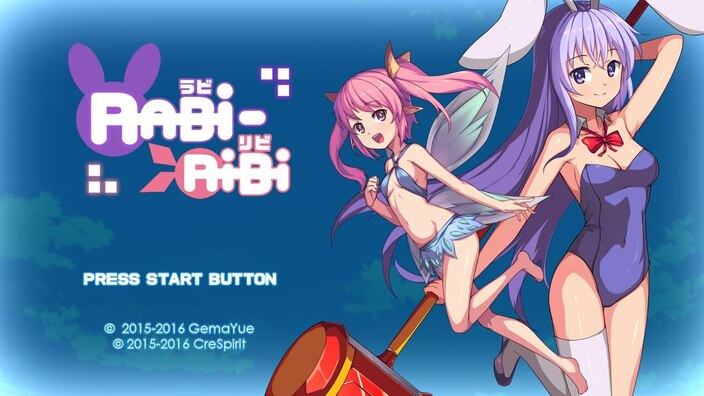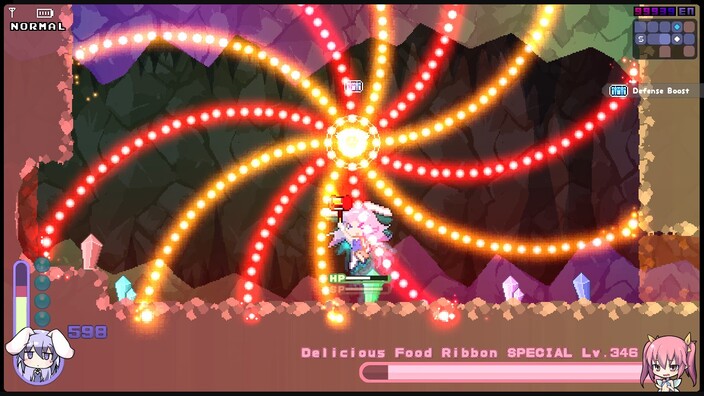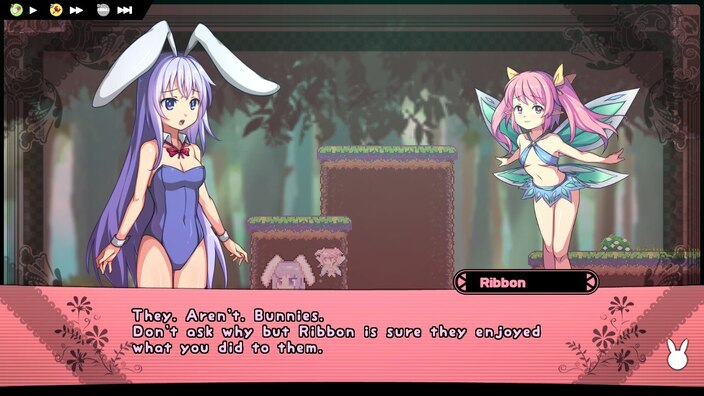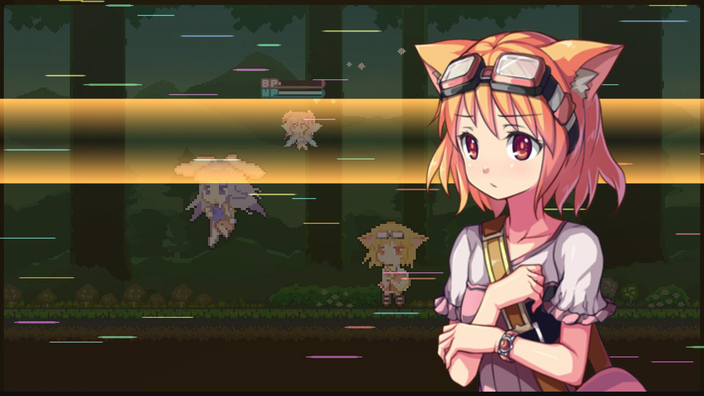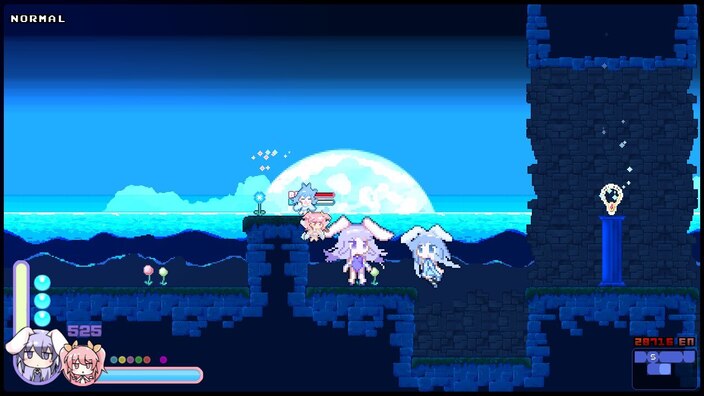Have you played...? Rabi-Ribi
When you look at the promotional art for Rabi-Ribi, you might mistake it for an eroge, but it’s not (I swear). If I had to define Rabi-Ribi in a short sentence, it would be: what a Touhou Project ⤴ game, a bullet hell shooter, would look like if it were a 2D metroidvania.
I think the comparison with Touhou is very fitting: Rabi-Ribi’s characters are all girls and there’s a big emphasis on the boss battles. In all these fights, these girls shoot out a lot of danmaku (bullet curtains) all over the screen. Even the graphical effect where the character’s portrait appears on the screen in a dramatic moment during the battle when their health gets low is reminiscent of Touhou’s spellcards.
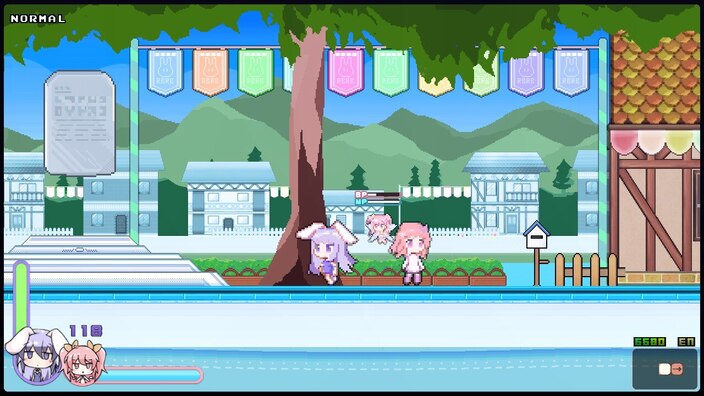
Erina, the main bunny girl character, controls great. She can attack with her piko hammer, jump, and gets more freedom as she unlocks new abilities following classical metroidvania progression. She’s also accompanied by Ribbon, a fairy, that serves as a secondary weapon/projectile shooter.
It might sound weird for a platformer to also be a bullet hell game, but it works surprisingly well. Erina’s hitbox is actually a small circle right in the middle of her sprite, just like in bullet hell shooters, so it’s easier to dodge projectiles than it looks. Also, when you do a melee attack and hold the attack button, she’ll move very slowly and her hitbox will become visible, allowing for more precise dodging.
Of course, in a shmup you can move in all directions to dodge stuff, but in a platformer you’re bound to the ground, so maneuverability is more limited. Boss battles can be tough as you’ll be dodging hundreds of bullets and lasers all over the screen. But controls are responsive so it never feels (too) cheap or unfair.
The game uses a stamina bar to limit the frequency of Erina’s attacks, which caught me off-guard at first. In other metroidvanias, I’m used to just mashing the attack button until the enemy is dead, but in this one you have to be more deliberate in how you attack.
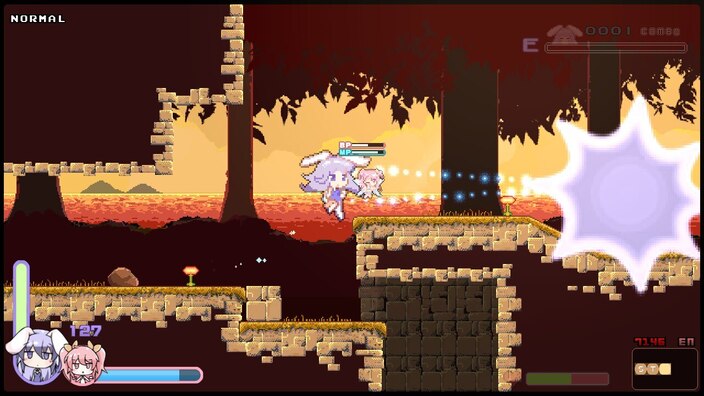
Another similarity with Touhou Project is that the plot makes absolutely no sense. The game begins with Erina waking up in a cardboard box, in the body of a bunny girl wearing stereotypical garments and everything. The thing is, she was literally a bunny before, an animal bunny, but now she’s human.
Your first mission is to find Rumi, your owner. From there, a weird story unfolds about a bunny-loving cult, people from our world going to Rabi-Ribi land, and even a hint of a time loop. The whole story is told through dialogues between the characters, but I confess many things didn’t make much sense to me. It seems the game was developed in Taiwan, so maybe some meaning was lost in translation. In any case, the plot is basically irrelevant for the game.
Graphics are pleasant, though I don’t think they’re the strong suit here. Everything is bright and colorful, very whimsical and appropriate for the tone of the game. I thought the environments and scenarios lacked a bit of polish in some places, particularly some tiling and some backgrounds. Enemies have nice sprites and are quite varied, ranging from local fauna and flora like flowers, bees and bunnies, to fairies, sparks, ghosts, robot maids, and many others, each with its own attack patterns and animations.
A side note: this game has a lot of flashing lights, some of which genuinely bothered my eyes a little. I’m not sure if there’s a way to turn these off, so if you have photosensitivity, please take care when playing.
All characters have their 16-bit, super deformed style sprites, which is the main way you’ll see characters in the game. All the boss characters also have a more detailed, anime-style portrait, which is shown in dialogues or in dramatic moments during battles. These portraits are all cute, of course, but they’re all very generic and bland. Also, I thought the sprites’ animations were a little wonky: the first time I paid attention to how Erina runs, it seemed like she was half tripping. Every girl sprite has an odd standing animation where their hair is always moving, even if they’re standing still.
All that said, I think all these weird things actually give this game personality and a charming look overall.
The music is excellent, I liked the tracks from the very beginning. Tunes are generally very chirpy and energetic, reflecting the laid-back and silly tone of the game, with strong beats and melodies that propel you forward. When I reached the Sky Bridge area, I started bopping my head to the beat. It’s a banger. People in the music’s comment section in Youtube say it was there when they fell in love with the game, and I must agree.
Rabi-Ribi puts a lot of emphasis on exploration and finding hidden power-ups. It claims to be a non-linear platformer. However, I felt it was a lot more linear than it should be. Many areas are blocked, not because you lack the skill or ability to get there, but because of arbitrary story progression flags. It’s not a big deal, but it does make the game world feel less free and organic.
At first I was skeptical that you could make a bullet hell game work as a platformer, but Rabi-Ribi proved it can be done in a fun and fair way. I’d give this a 7.5/10 - it has its flaws and weirdness, but it’s also very fun, challenging, and charming, with great music.
I mentioned how Rabi-Ribi looks like a Touhou platformer, but I’m aware of Touhou Luna Nights ⤴, a “proper” 2D Touhou metroidvania. It looks very cool and solid, and I actually have it in my Steam library. Let’s see when I get around to playing it.
Details
- Name: Rabi-Ribi
- Genre: 2D platformer metroidvania
- Developer: CreSpirit ⤴
- Year: 2016
- Available on Steam ⤴, Playstation 4, Playstation Vita, Nintendo Switch
Extra screenshots
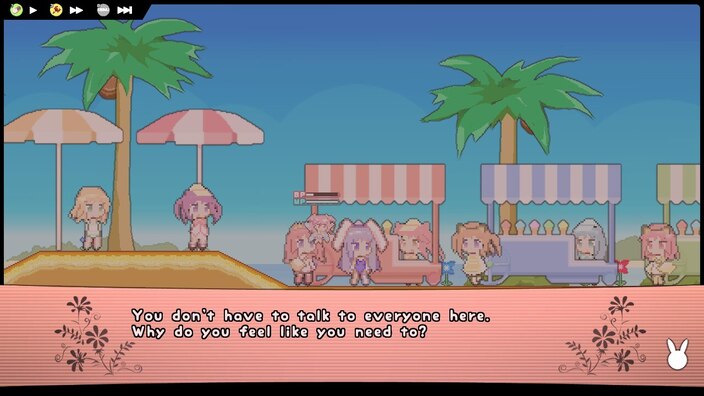
|
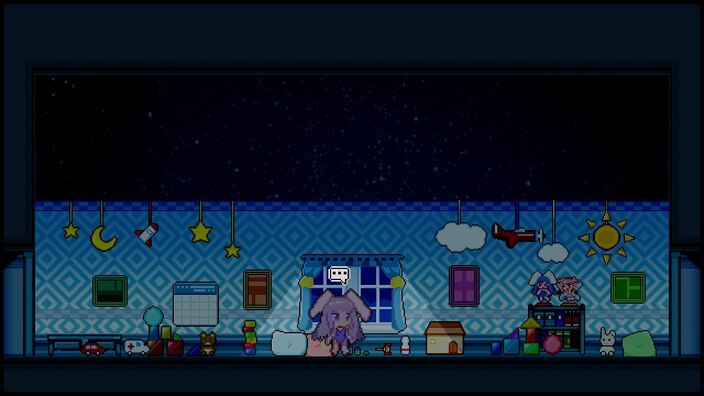
|

|
|---|---|---|
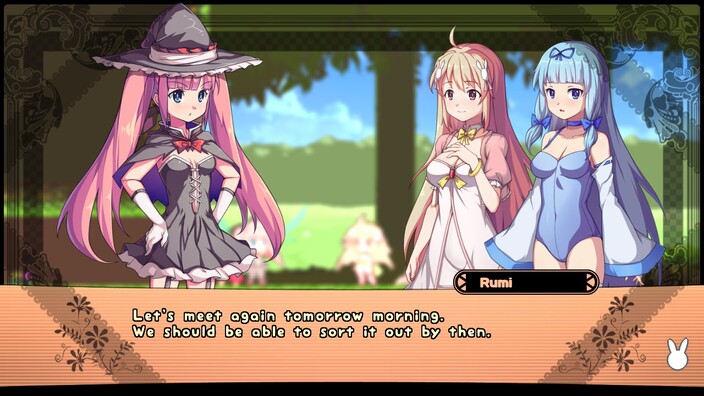
|
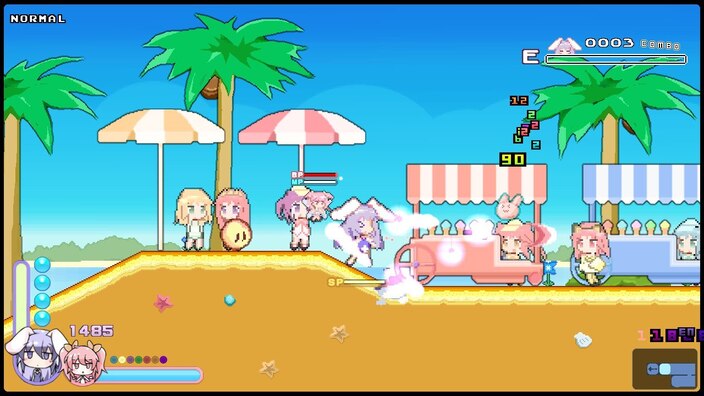
|
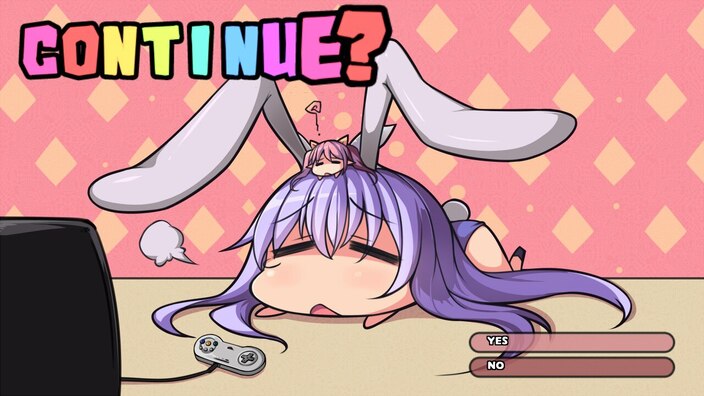
|
Post revised with ChatGPT
